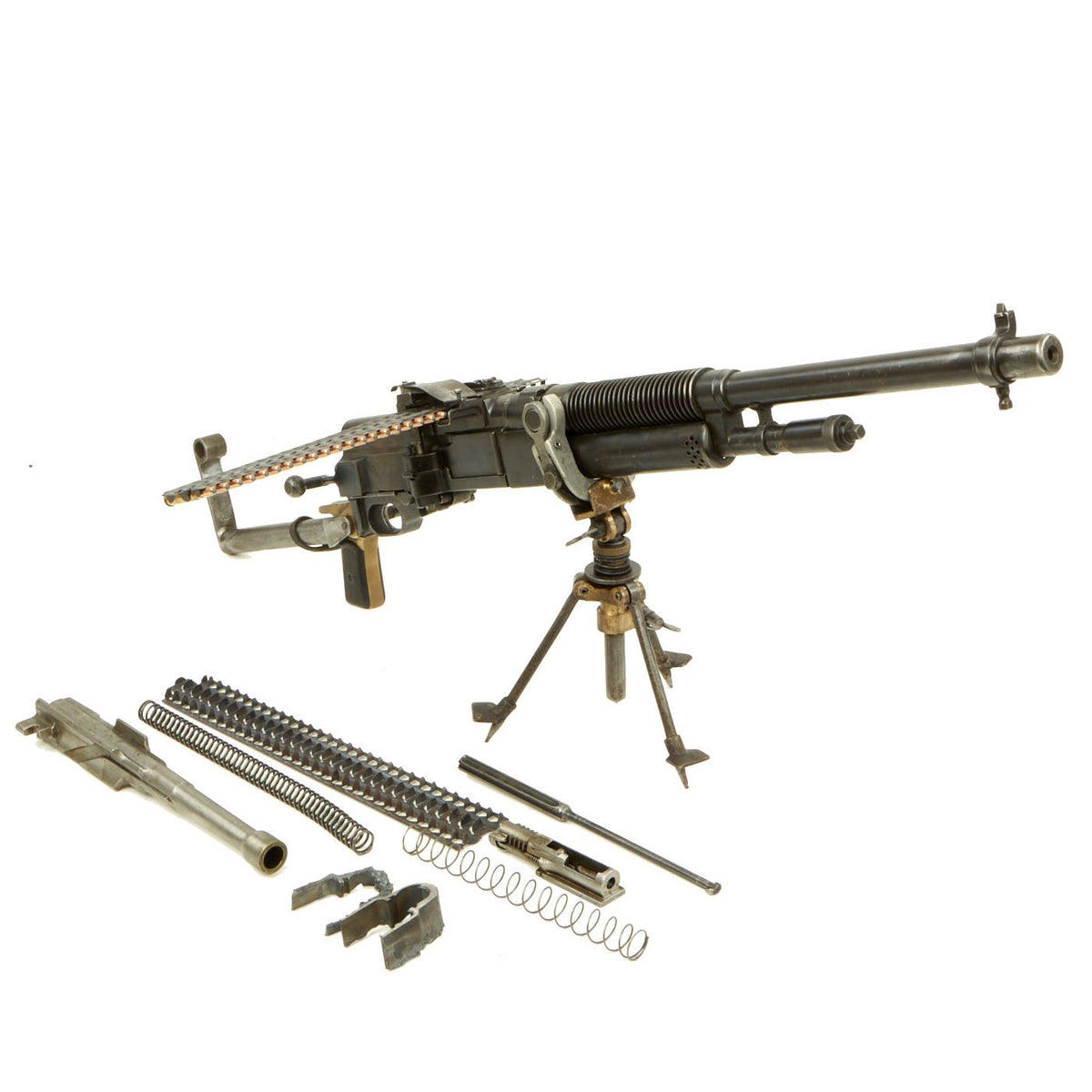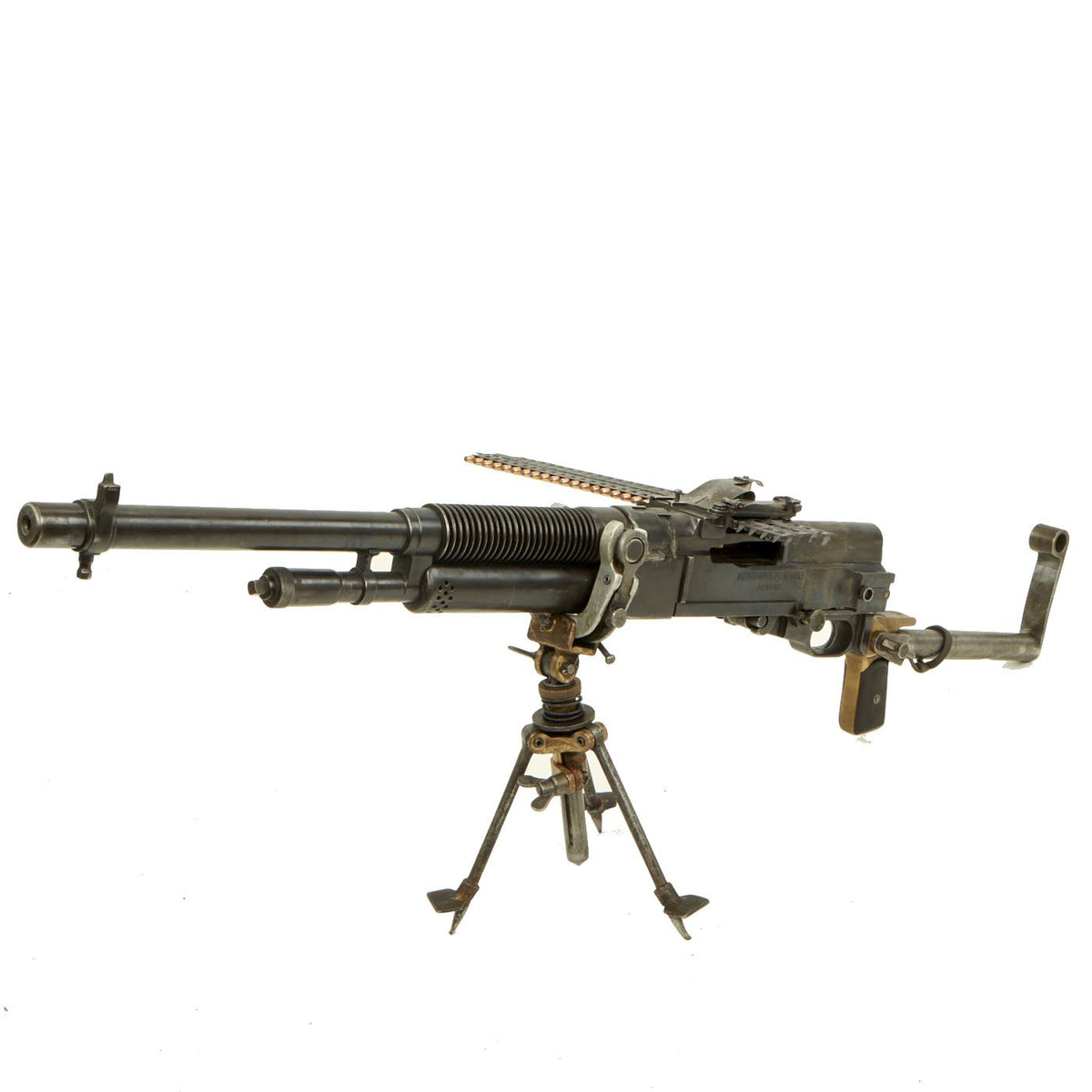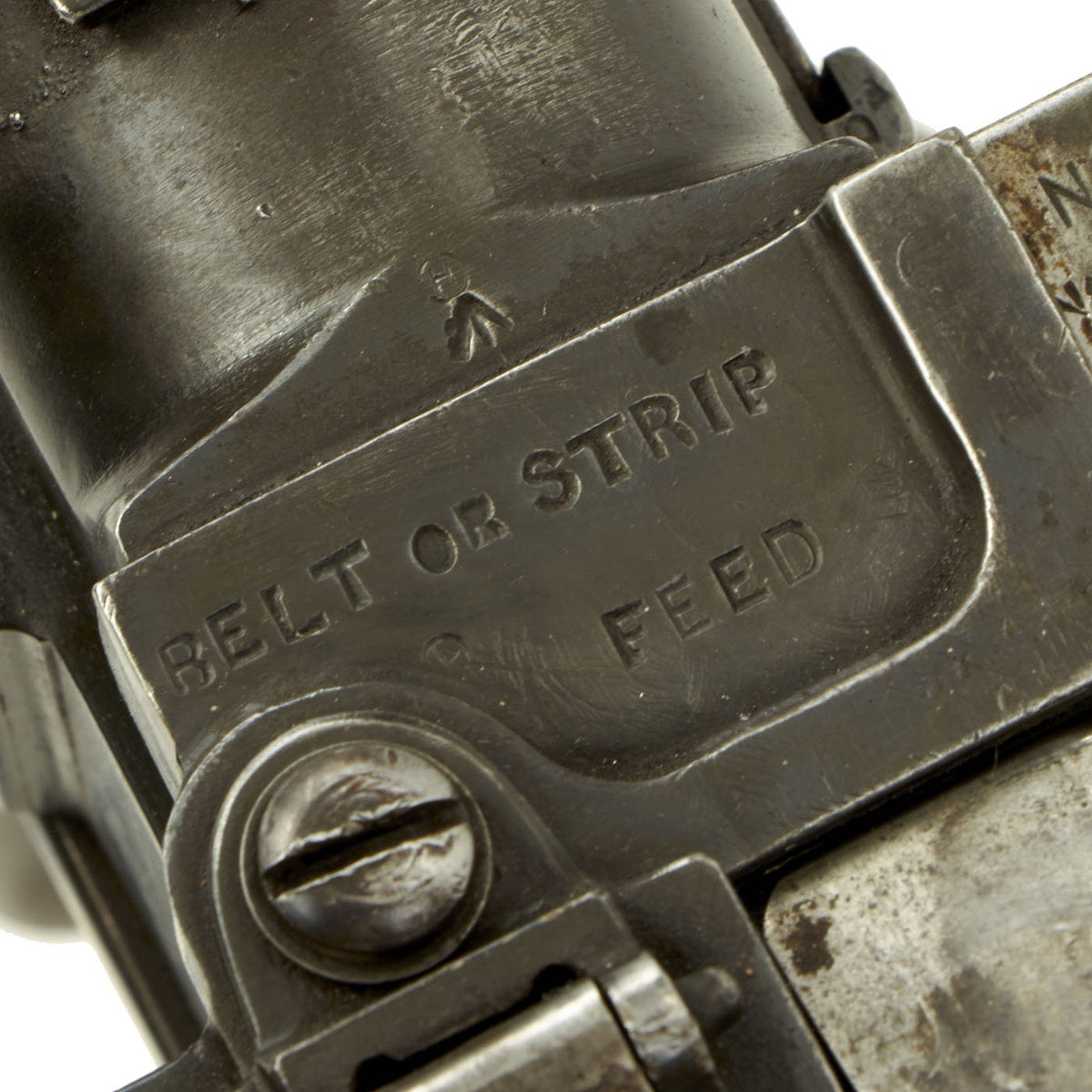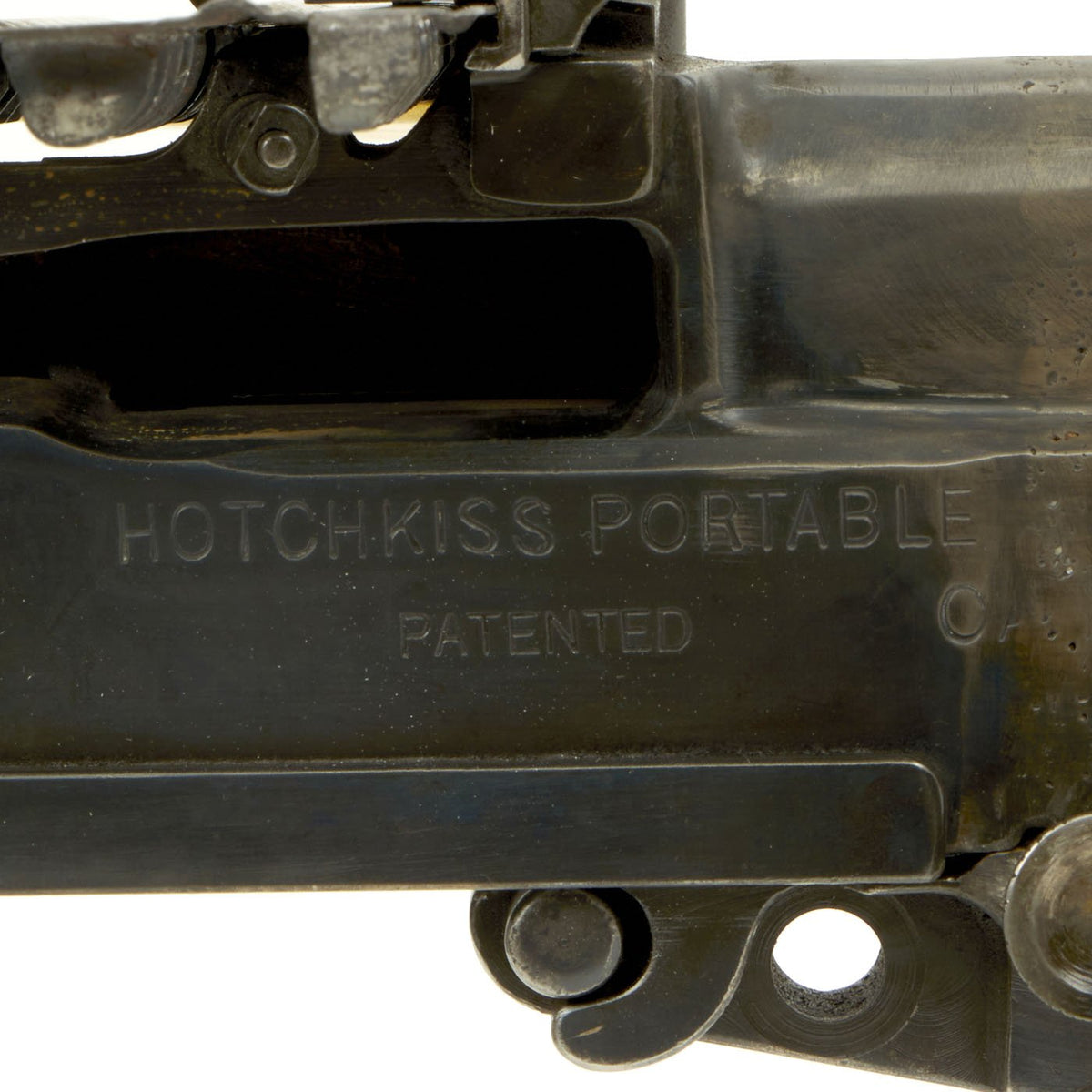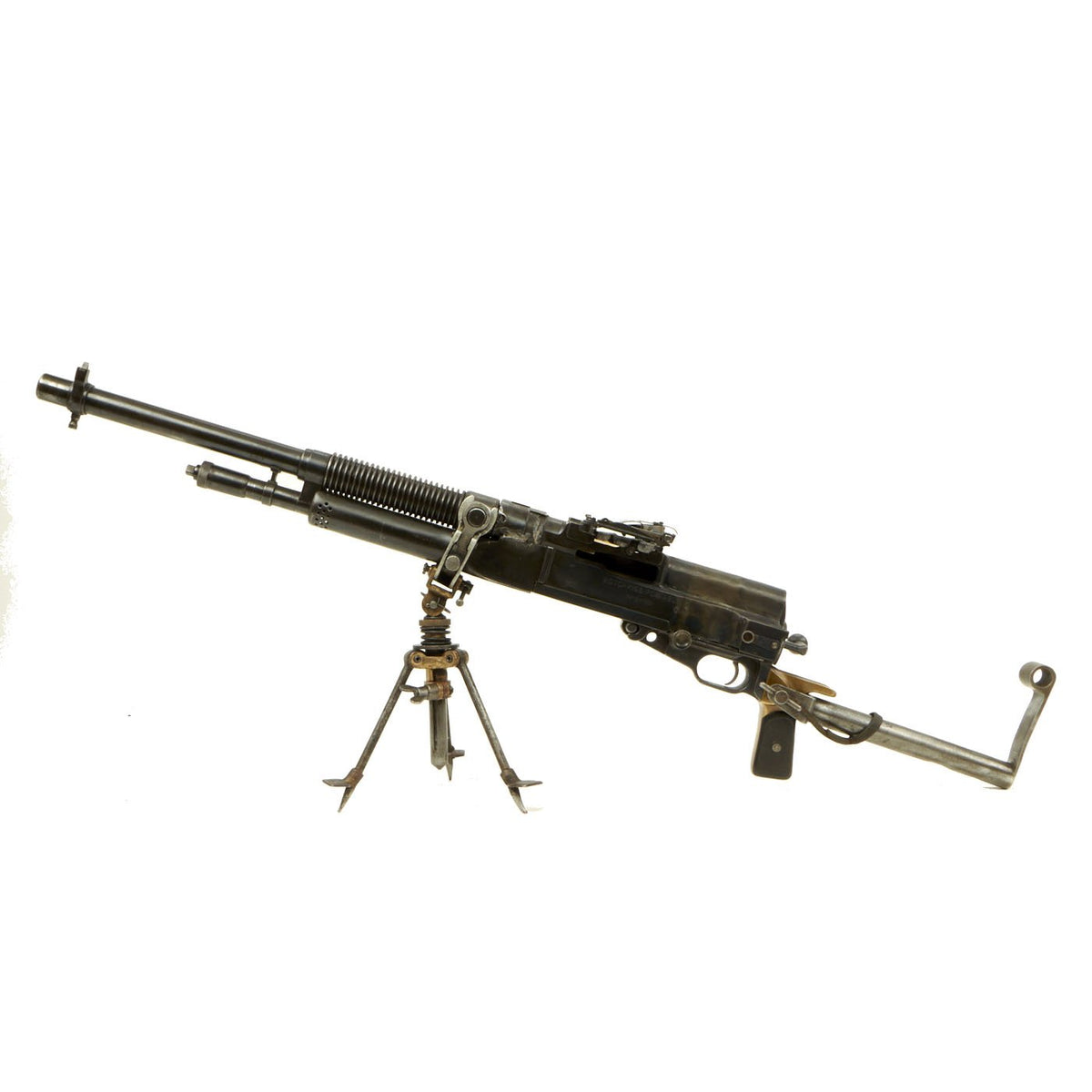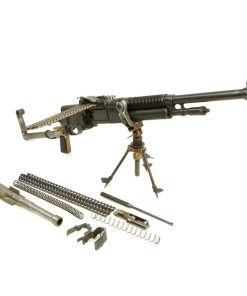Original British WWI Hotchkiss .303 Portative Display LMG with Feed Strips, Tripod, Shoulder Stock & Internals Original Items
$ 5.495,00 $ 1.373,75
Original Item: Only One Available. Just purchased from a private collection, this is an incredible Inert Display Machine Gun, built from all original parts on an original BATF approved re-welded display receiver. It has properly had a 3 inch section replaced entirely with solid steel bar stock, and the original barrel deactivated by cutting and welding the chamber. Some of the internal components were also demilitarized long ago, and welded in place, making this totally legal to own without a license of any kind. Others were not altered, and are included with this incredible offering, along with some left over pieces not used in the construction.
This is a very good condition British WWI manufacture Hotchkiss .303 Caliber pattern Portative cavalry Display Light Machine Gun, constructed from all original parts on an ORIGINAL re-welded receiver. Virtually every display gun that we have handled was built in a machined aluminum dummy receiver, but this actually has the original receiver, now deactivated, still displaying HOTCHKISS PORTABLE / PATENTED on the left side.
The original parts have many original markings, including serial numbers, maker marks, and arsenal proofs. It also has the standard attached carry handle, standard issue 1917-dated “Crow’s Foot “Tripod by TYERS, and a detachable “L” shoulder stock. Also are included are two original steel feed strips, one of which is loaded with dummy inert .303 ammo (where permitted). This is truly the best offering that we have ever had!
These were extensively used in WWI, being the first truly portable machine gun. Very intricate and very rare!
Hotchkiss Mark I Light Machine Gun In British Service The Hotchkiss Portative has a very interesting battle history, although the gun is not as widely known as the other British light machine gun, the Lewis. Adopted as the Hotchkiss Portable Machine Gun Mark I, it was based on the French Hotchkiss Model 1909. The British considered it more suitable for mounted troops cavalry and mounted infantry than the more cumbersome Lewis. It was used by some famous units in equally famous battles.
The Australian Light Horse, New Zealand Mounted Rifles Brigade, and the legendary Camel Corp used it in the Desert Campaign in Sinai and Palestine from 1915 1917. In Palestine, it was used by the 4th Australian Light Horse Brigade in their overwhelmingly successful attack at Beersheba (immortalized in the excellent film The Light Horsemen, 1987). This charge is known as the most successful attack by mounted infantry in history. The Mark I was used by the ANZACs in the Gallipoli Campaign, and by British mounted troops in the fighting on the Western Front.
Fast Shipping with Professional Packaging
Thanks to our longstanding association with UPS FedEx DHL, and other major international carriers, we are able to provide a range of shipping options. Our warehouse staff is expertly trained and will wrap your products according to our exact and precise specifications. Prior to shipping, your goods will be thoroughly examined and securely secured. We ship to thousands clients each day across multiple countries. This shows how we're dedicated to be the largest retailer on the internet. Warehouses and distribution centres can be located throughout Europe as well as the USA.
Note: Orders with more than one item will be assigned a processing date depending on the item.
Before shipping before shipping, we'll conduct a thorough inspection of the items you have ordered. Today, the majority of orders will be delivered within 48 hours. The delivery time will be between 3-7 days.
Returns
The stock is dynamic and we cannot completely manage it because multiple stakeholders are involved, including our factory and warehouse. So the actual stock may alter at any time. It's possible that you may not receive your order once the order has been made.
Our policy is valid for a period of 30 days. If you don't receive the product within 30 days, we are not able to issue a refund or an exchange.
You can only return an item if it is unused and in the same state as the day you received it. You must have the item in its original packaging.
Related products
Uncategorized
Band of Brothers ORIGINAL GERMAN WWII Le. F.H. 18 10.5cm ARTILLERY PIECE Original Items
Uncategorized
Angolan Rebel 1970s era 60mm Inert Display Mortar from Angolan Civil War Original Items
Uncategorized
Uncategorized
Armoured Fighting Vehicles of the World: AFVs of World War One (Hardcover Book) New Made Items
Uncategorized
Uncategorized
Uncategorized
Uncategorized
Uncategorized
Uncategorized
Uncategorized
Uncategorized
Armored Burgonet Helmet & Polearm from Scottish Castle Leith Hall Circa 1700 Original Items
Uncategorized
Australian WWII Owen MK1 Machine Carbine SMG Custom Fabricated Replica with Sling Original Items
Uncategorized
Uncategorized
Uncategorized
Uncategorized

